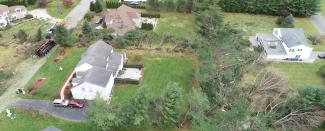Recovery Branch

RIEMA’s Recovery Branch is tasked with managing the state’s disaster recovery efforts, ensuring that communities can rebuild effectively after emergencies. Its key responsibilities include:
Administering Disaster Recovery Programs
RIEMA oversees several federal disaster recovery programs:
- Public Assistance (PA): Provides financial support to state, local, and tribal governments, as well as certain private non-profit organizations, for debris removal, emergency protective measures, and the repair or replacement of damaged public infrastructure.
- Individual Assistance (IA): Offers aid to individuals and families affected by disasters, helping with temporary housing, home repairs, and other necessary expenses.
- U.S. Small Business Administration (SBA): Provides low-interest disaster loans to help individuals and businesses recover from federally declared disasters. These loans are intended to cover uninsured or underinsured losses and to restore affected properties and operations.
Coordinating Damage Assessments and Federal Declarations
RIEMA collaborates with local officials and FEMA to conduct Preliminary Damage Assessments (PDAs), which determine the extent of damage and the need for federal assistance. If warranted, the Governor may request a federal disaster declaration to enable access to additional resources.
Providing Technical Assistance and Training
The agency offers guidance to municipalities, school districts, and eligible non-profits on navigating recovery programs. This includes support with application processes, documentation, and compliance requirements. Rhode Island Emergency Management Agency (RIEMA) also conducts training sessions to strengthen local preparedness and recovery capabilities.
Engaging with Stakeholders
The Recovery Branch works closely with local and state agencies, legislators, volunteer organizations, and the public to share information, support preparedness planning, and develop training programs.
Additional Resources
- Resource Library for Individual Assistance | FEMA.gov
- Get Assistance After a Disaster | FEMA.gov
- Survivors' Road to Recovery | FEMA.gov
- Individual Assistance | FEMA.gov
- Reforming Individual Assistance: New Benefits and Streamlined Processes to Help Disaster Survivors | FEMA.gov
- Eligibility Criteria for FEMA Assistance | FEMA.gov
- Individual Assistance Program and Policy Guide (IAPPG)
- Public Assistance Program and Policy Guide (PAPPG)
